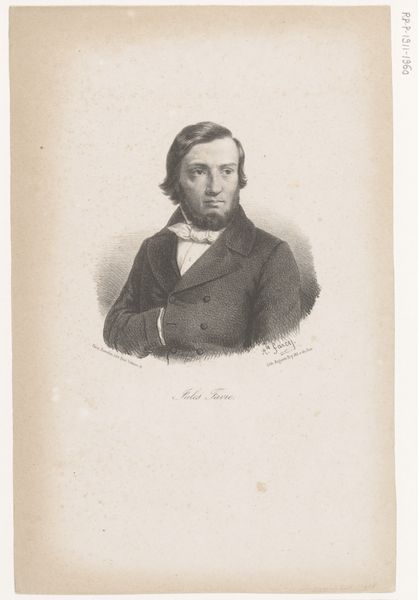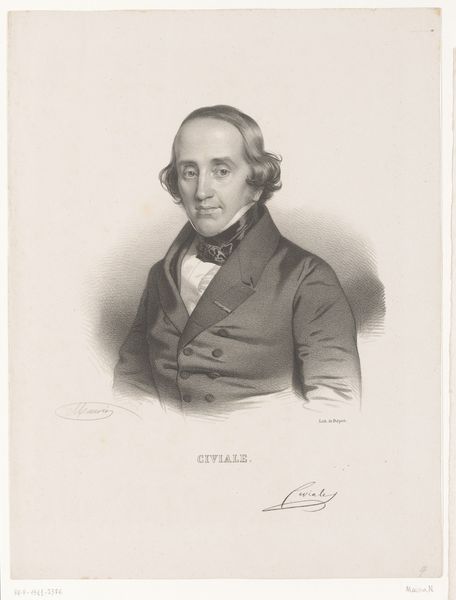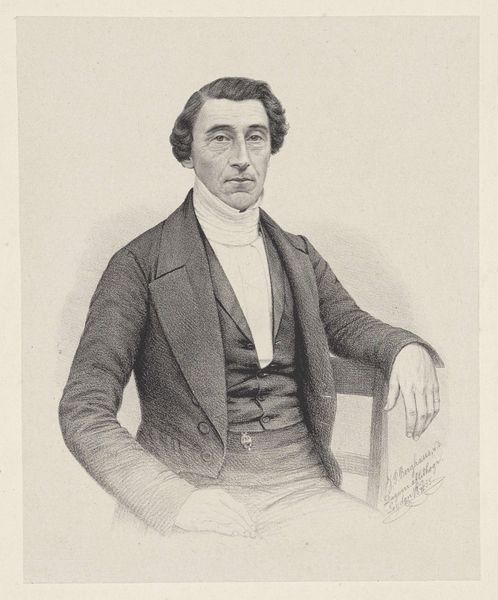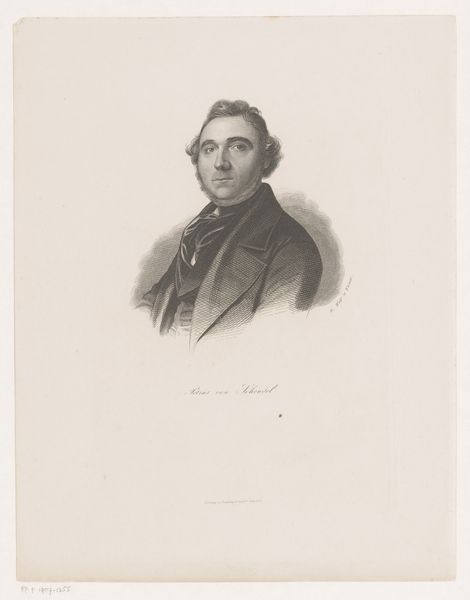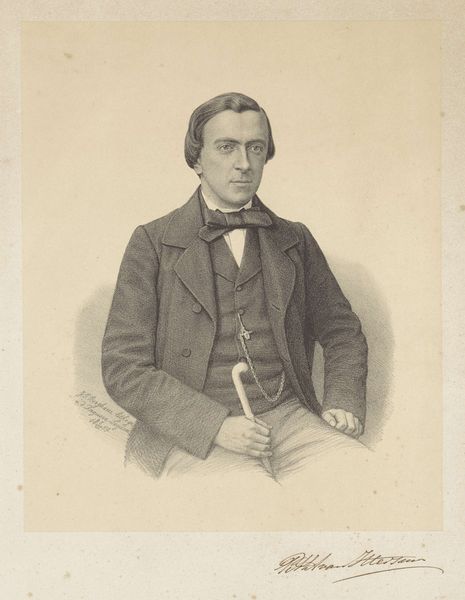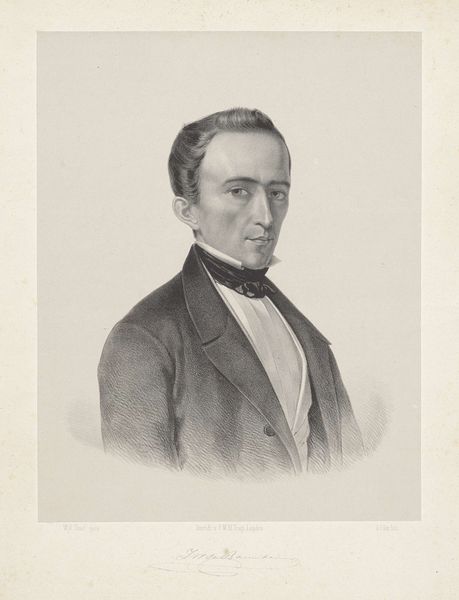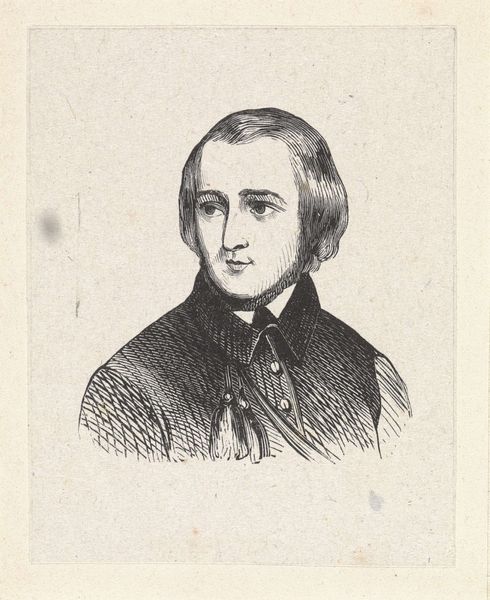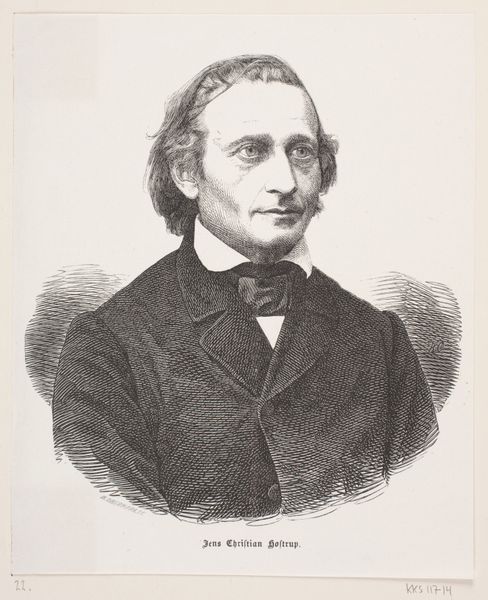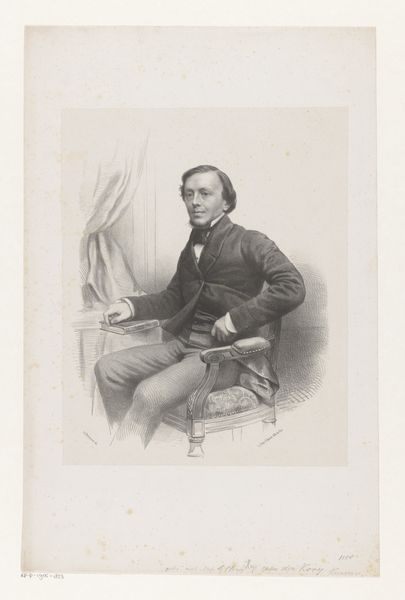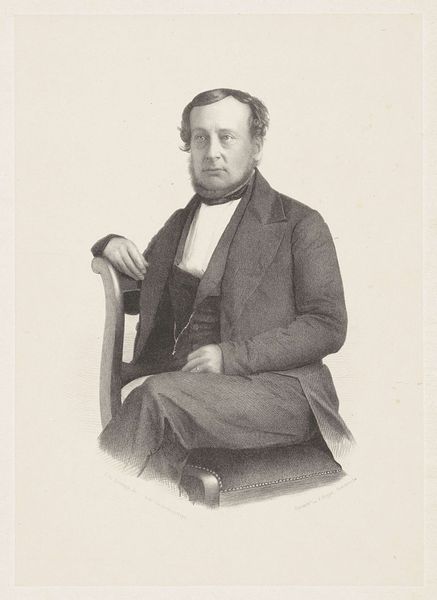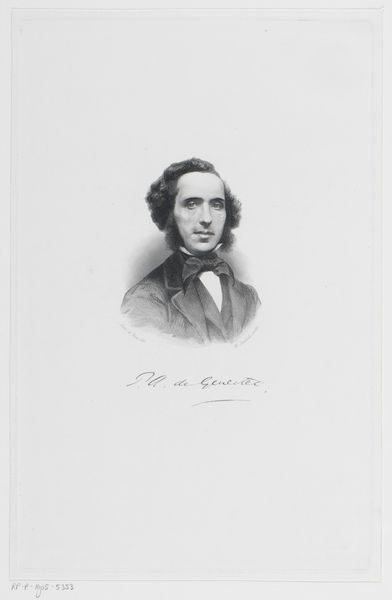
Dimensions: 180 mm (height) x 142 mm (width) (bladmaal)
This engraving of Michael Rosing Wiehe was made by Franz Wilhelm Obermann in the 19th century. Look closely, and you'll see that it is composed of thousands of tiny lines, each carefully etched into a metal plate. Engraving is an exacting process, requiring immense skill and patience. The artist uses a tool called a burin to carve lines into the metal. These lines hold ink, which is then transferred to paper under high pressure. The depth and density of the lines create the image's tones and textures. The sharp, precise lines give the portrait a crisp, detailed appearance, capturing Wiehe's likeness with remarkable accuracy. Engraving was a popular method for reproducing images, playing a crucial role in disseminating information and art before photography became widespread. Consider the labor involved in creating this intricate image, and how this painstaking process contrasts with today's digital methods of image-making. Appreciating the craft behind this engraving allows us to see it not just as a portrait, but as a testament to the artistry and labor of a skilled artisan.
Comments
No comments
Be the first to comment and join the conversation on the ultimate creative platform.
